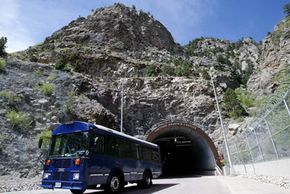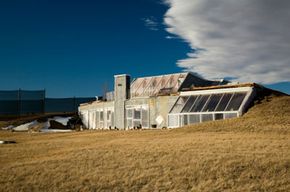Washington serves as a catchall term for the seat of power in the United States. It's taken on a single collective identity, as in "Washington's decision to send a senior diplomat to nuclear talks with Iran" [source: Reuters]. Canada has a catchall town too -- Ottawa -- and during the Cold War, Washington and Ottawa worked closely to defend their shared continent from Soviet attack.
The most prominent result of this joint defense venture was NORAD, the North American Aerospace Defense Command. Cultivated from a three-tier radar detection system spanning Canada from its southern border to the Arctic Circle, NORAD was an integration of both nations' detection systems into one comprehensive network. It was helmed through two controls centers: one in Canada and one in the United States. Washington placed its high value target inside one of the most secure locations on earth -- deep within Cheyenne Mountain in Colorado.
Advertisement
After carving out 700,000 tons of the mountain's granite innards and securing the only egress into the command center with two 3.5-feet thick steel blast doors, the U.S. military was confident the base could withstand a direct nuclear strike [source: The Gazette, DTIC].
The confidence in the security afforded by subterranean structures isn't exclusive to the United States. Chairman Mao constructed an underground city beneath Beijing following a border dispute with the Soviets in 1969. In the current unpolarized world, the seats of power are splintered, with the most powerful wielding information rather than intercontinental ballistic missiles. But the mentality that subterranean equals security has remained a constant.
There are companies that operate the networks the citizens of the world use to circumvent the Internet. And there are others that maintain those same people's credit histories and other sensitive information. Both of these powerful industries have determined that subterranean locations are the best sites to store their golden geese. Underground structures are less susceptible to physical intrusion and natural disaster. They also offer constant temperatures, and since subterranean buildings aren't susceptible to the fickle nature of aboveground weather, they require less energy.
One wonders with the benefits offered underground why we don't live there.
Advertisement


